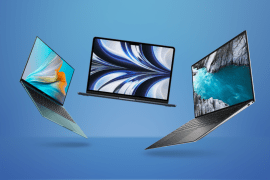Asus ROG Ally X review: fan feedback has gone a long way
Not quite an Ally 2 - but the next best thing
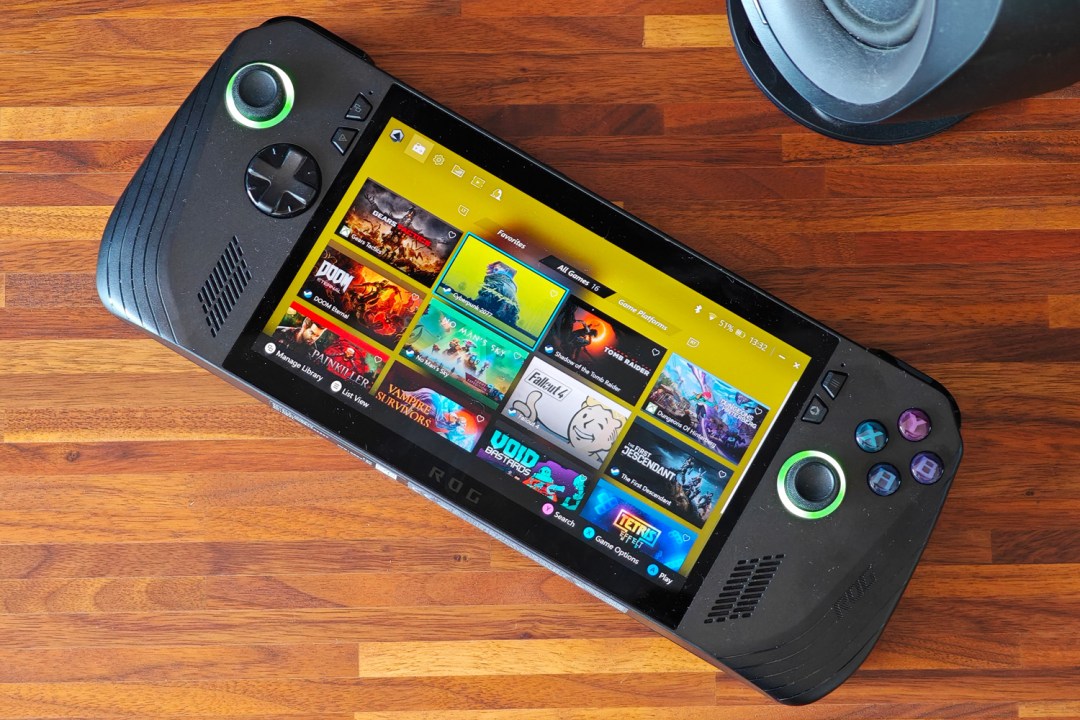
Stuff Verdict
A mid-life update that addresses pretty much every major complaint about the original. The Asus ROG Ally X still isn’t the perfect gaming handheld, but it’s the best that runs Windows.
Pros
- A powerful gaming machine with quiet, effective cooling
- Considerably better battery life than the original Ally
- Ergonomics a welcome improvement
Cons
- Windows still a weak link
- A shame the screen hasn’t switched to OLED
Introduction
PC-based handheld gaming consoles have really only just left the starting blocks – and I’ve seen plenty fall at the first hurdle. The original ROG Ally fared better than most, with ample power and a variable refresh rate screen that set the bar for Windows-powered machines. But basic battery life and some ergonomic blunders held it back. The Asus ROG Ally X is the mid-life refresh designed to fix those pain points.
As well as squeezing in double the battery capacity, significantly more internal memory and twice as much storage as the ROG Ally, Asus has been on a mission to improve playability. Almost every button, analogue stick and trigger has been tweaked in some way, and the chassis has been reshaped for better comfort. The AMD chipset and 7in display have been carried over, but not much else.
On paper, that should help it better compete with the Steam Deck OLED – but at $799/£799, the Ally X is more than £200 more expensive than Valve’s machine. Has Asus ironed out enough kinks?
How we test gaming hardware
All games consoles and gaming hardware tested on Stuff are put through their paces with days’ worth of play time. We use our years of testing experience to judge areas such as build quality, software experience, battery life and other features. Manufacturers have no visibility on reviews before they appear online, and we never accept payment to feature products.
Find out more about how we test and rate products.
Design & build: paint it black
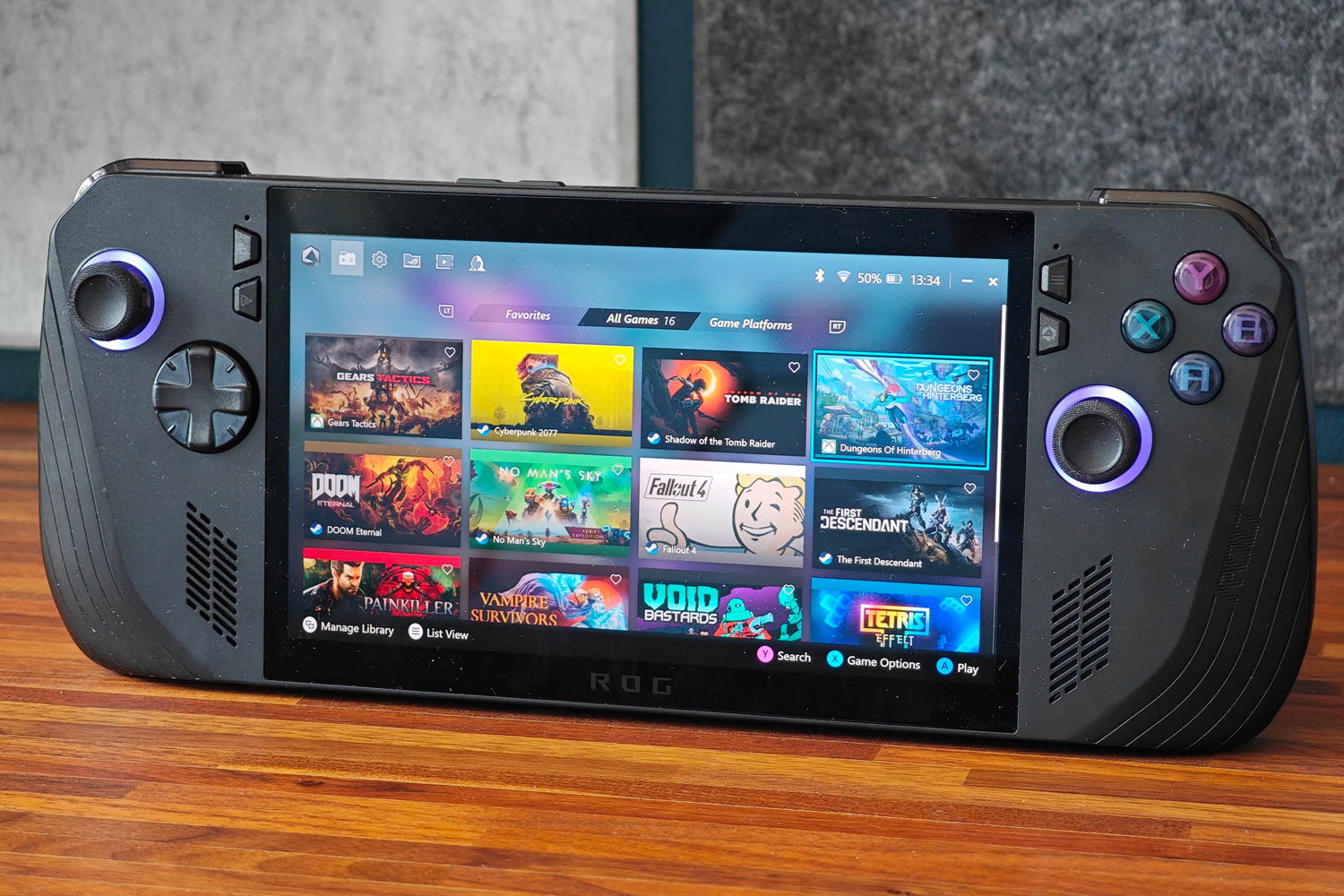
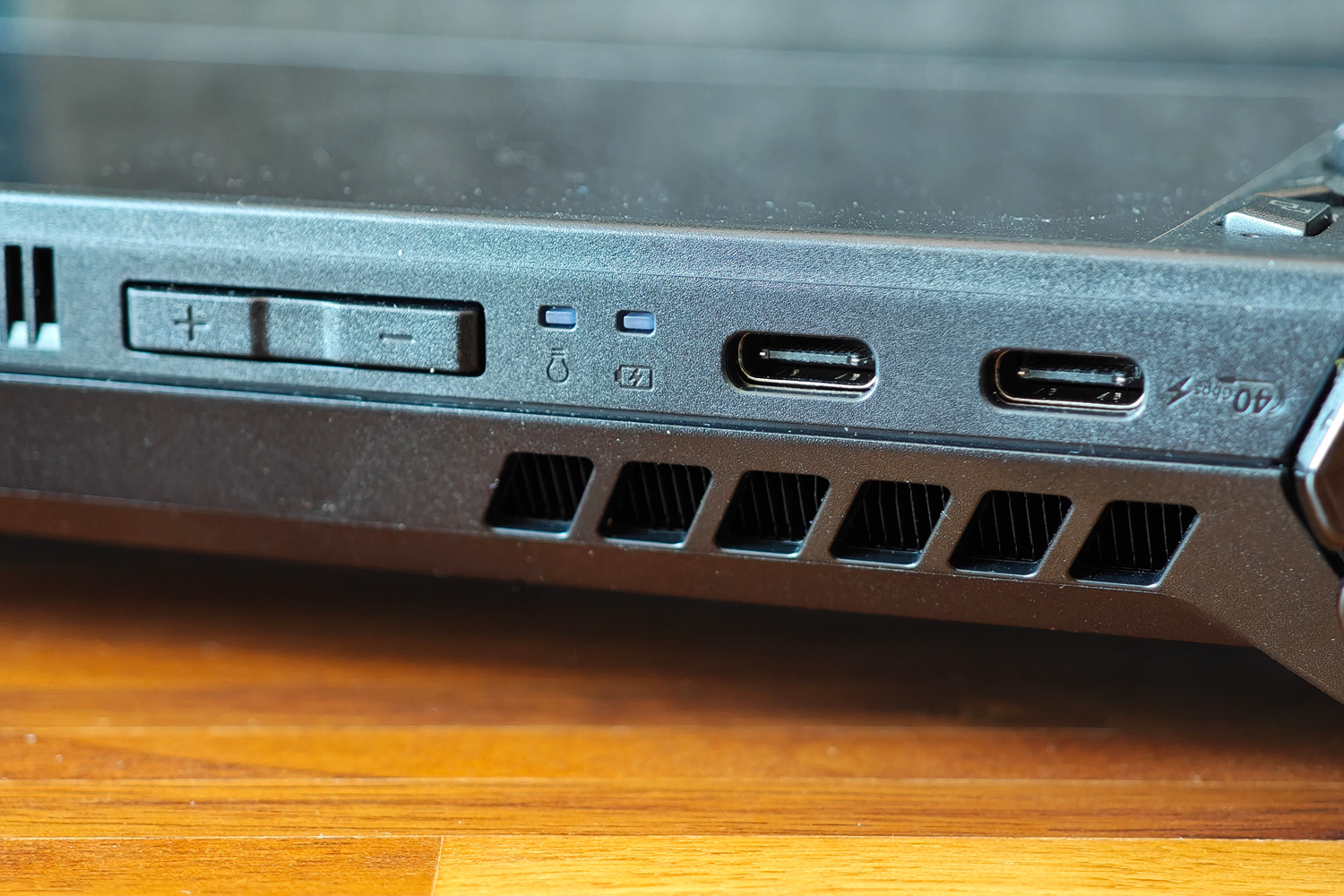
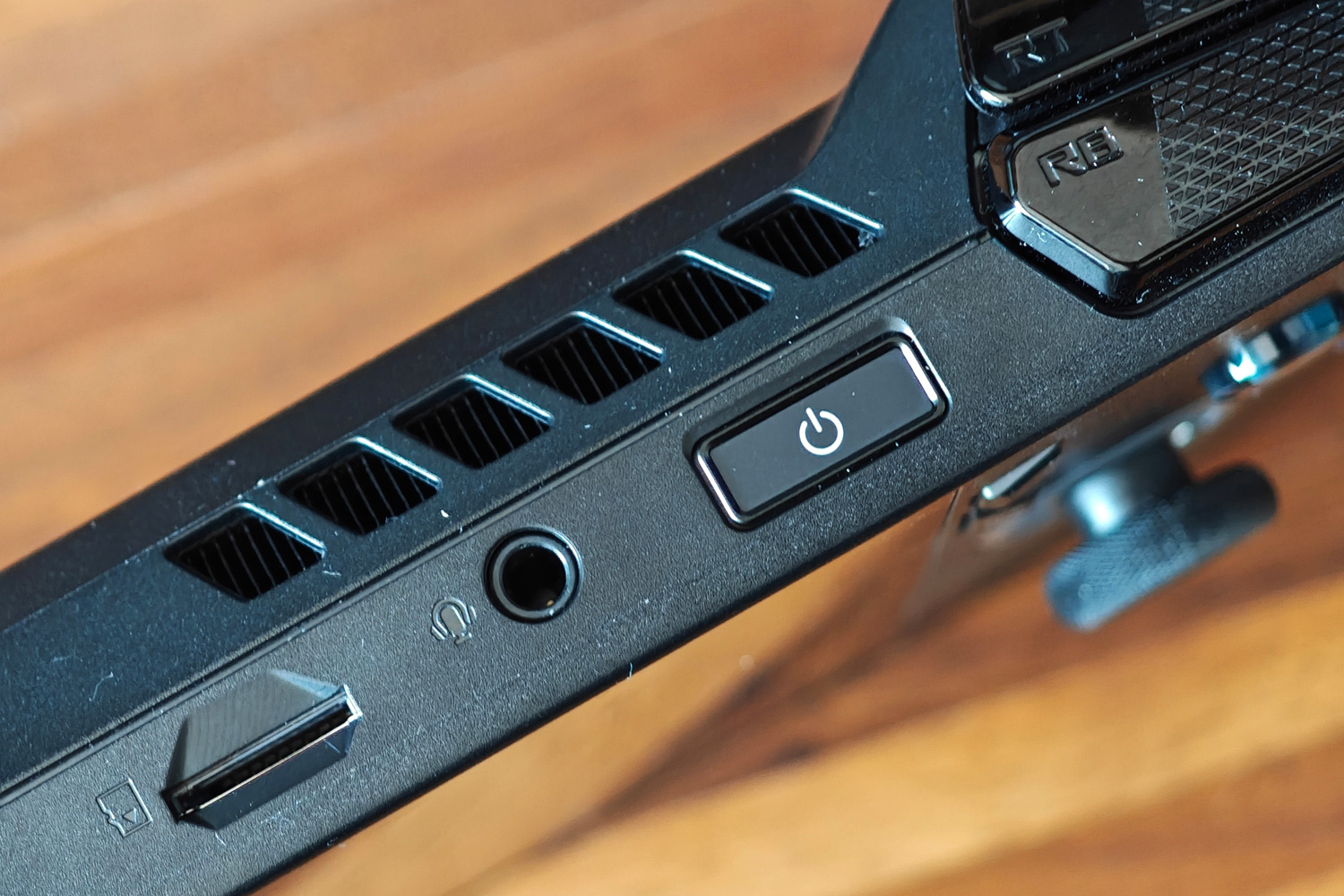
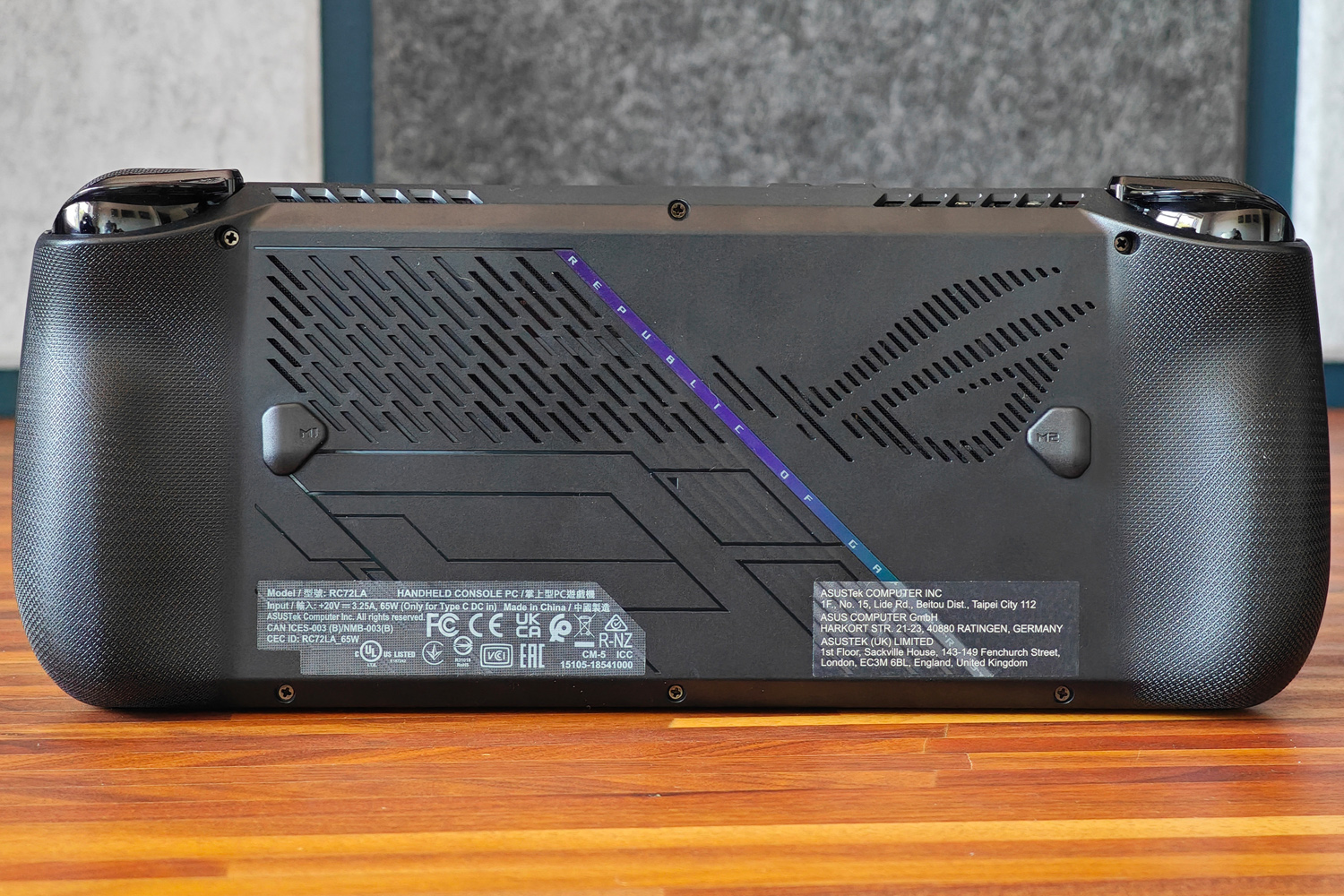
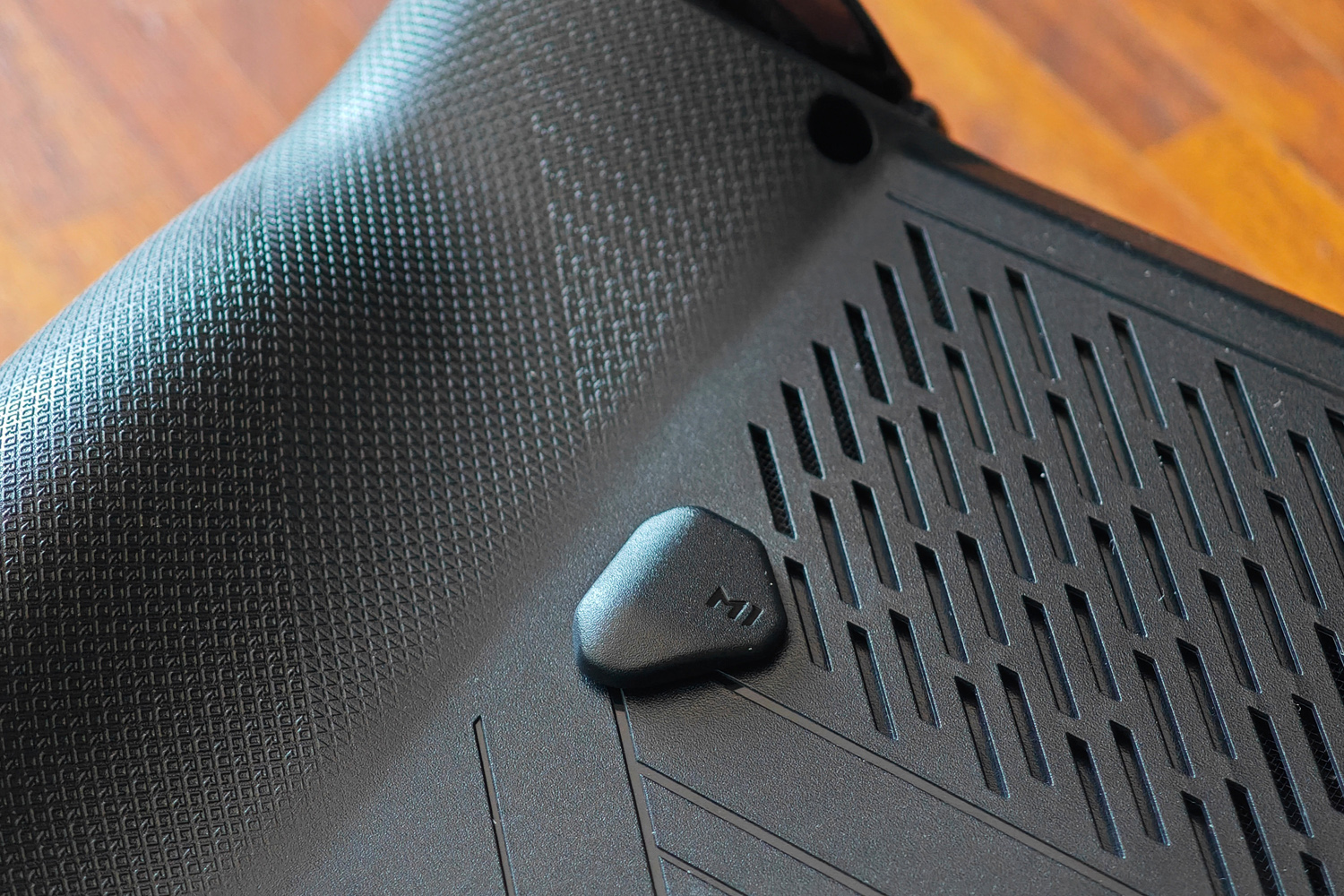
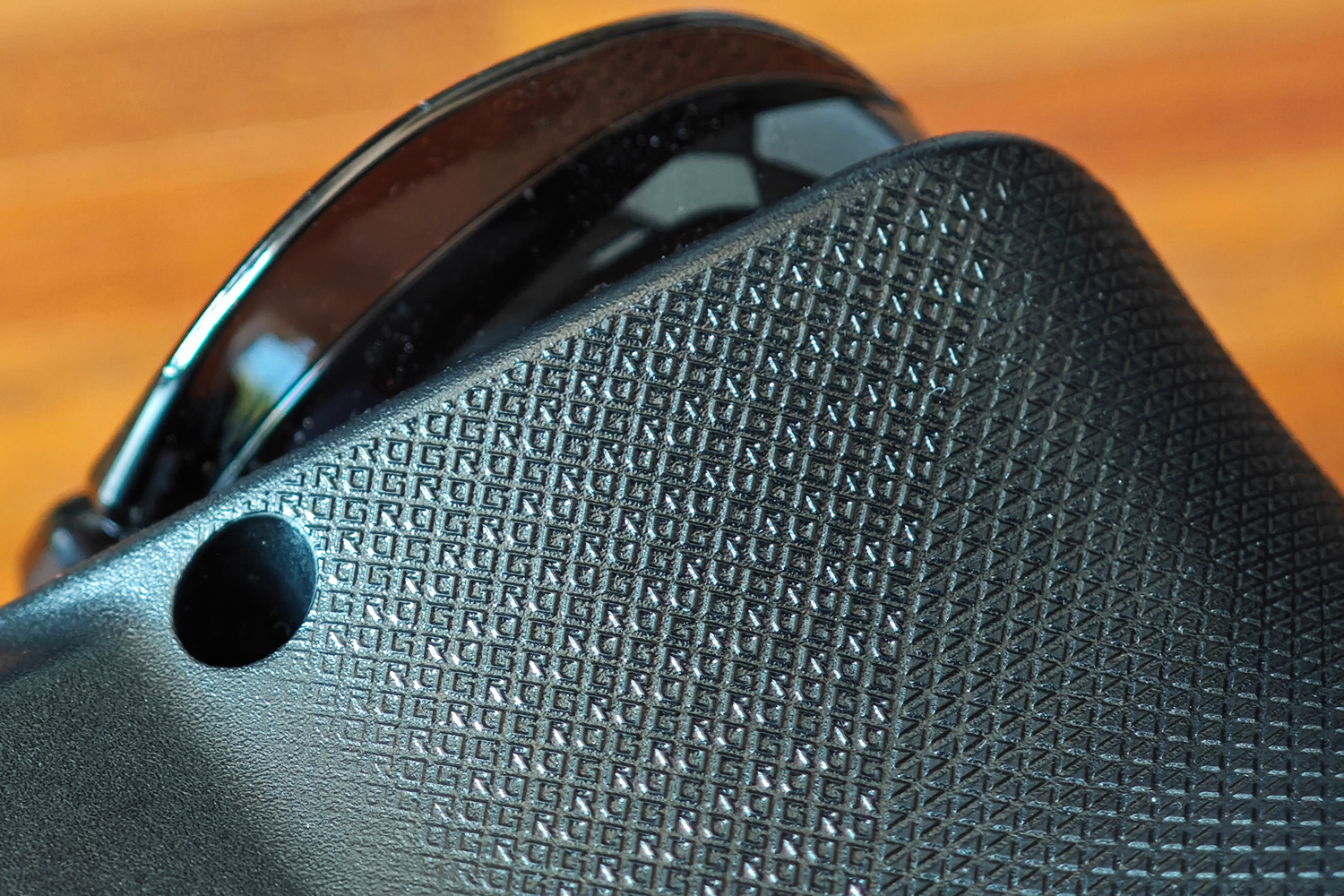
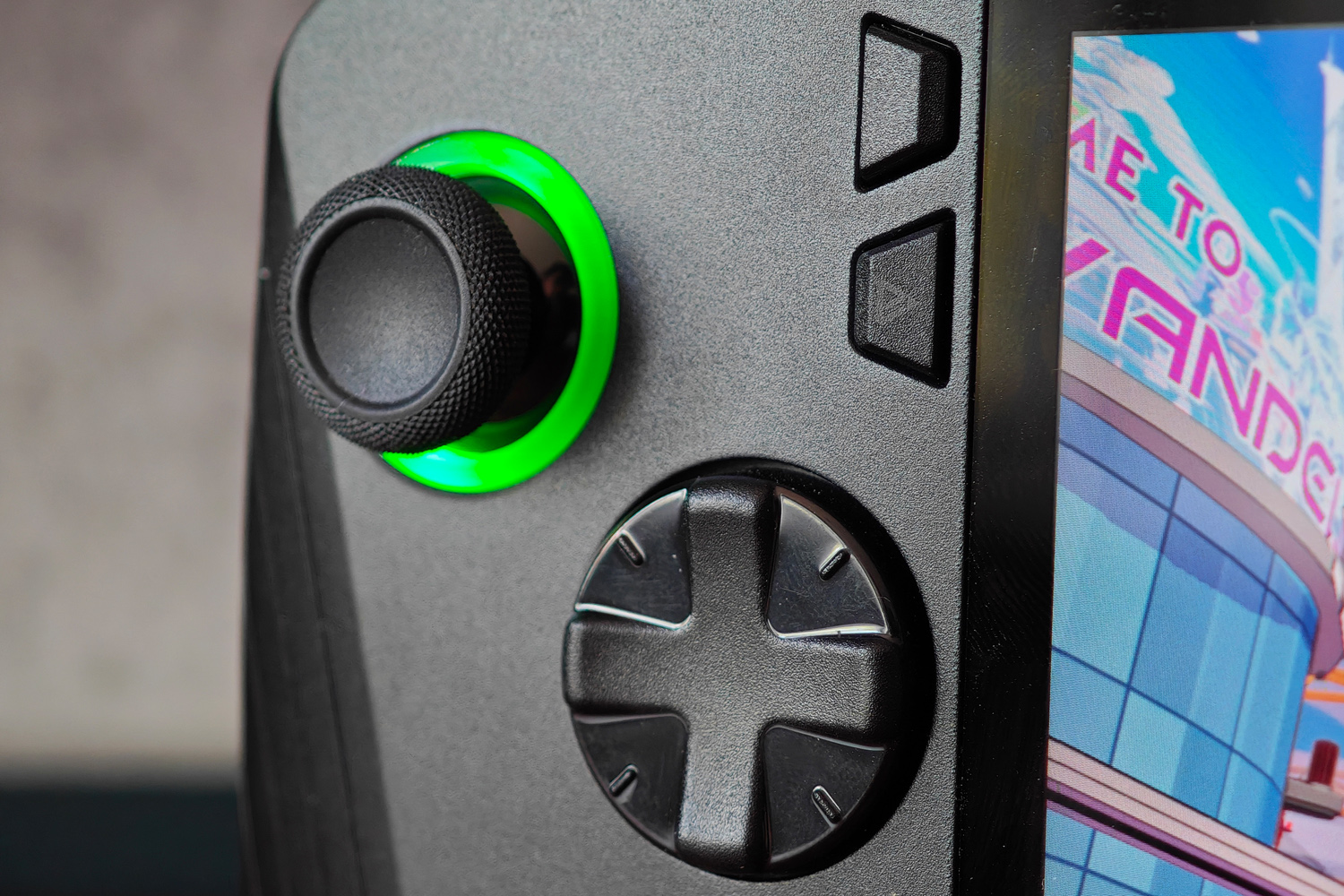
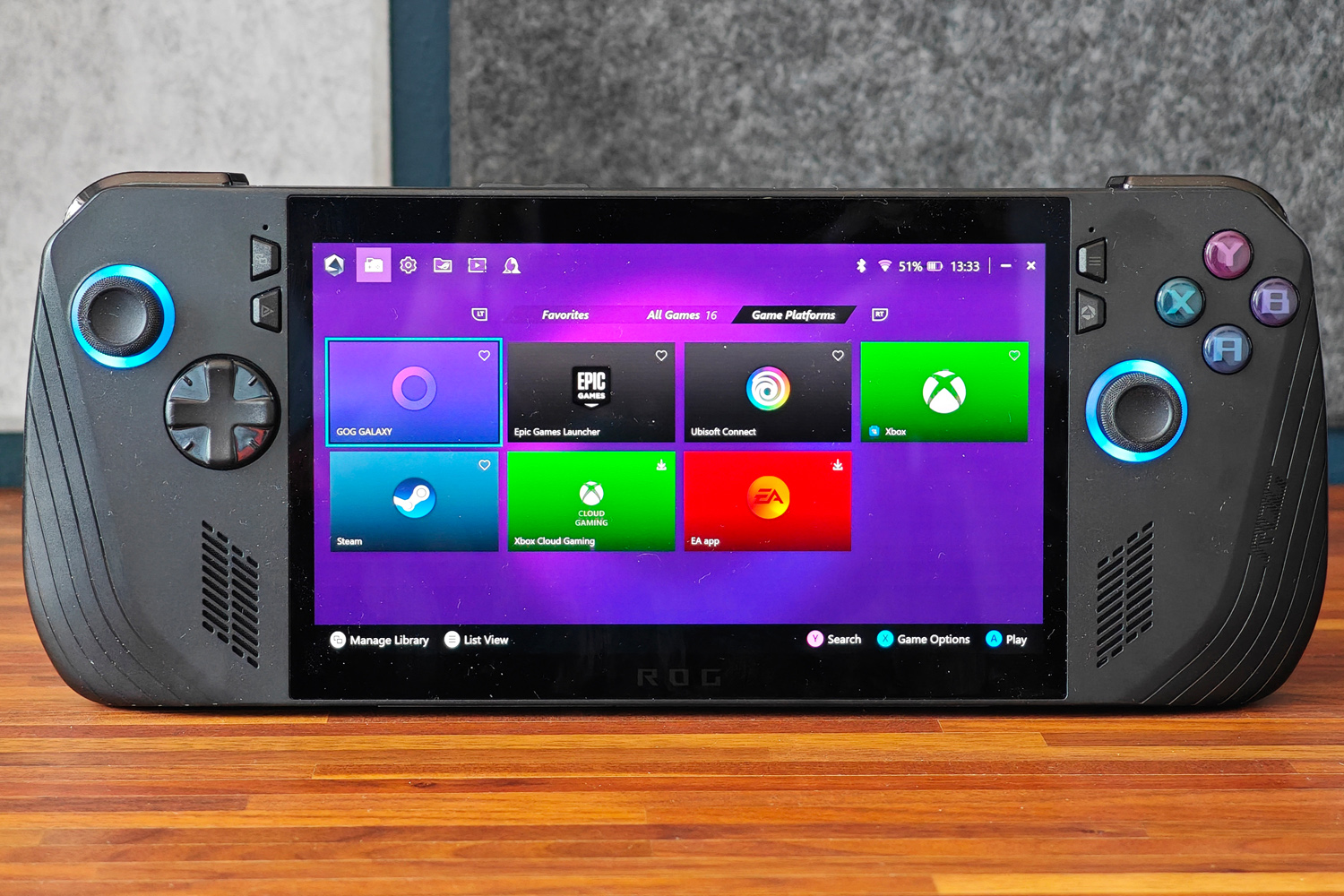
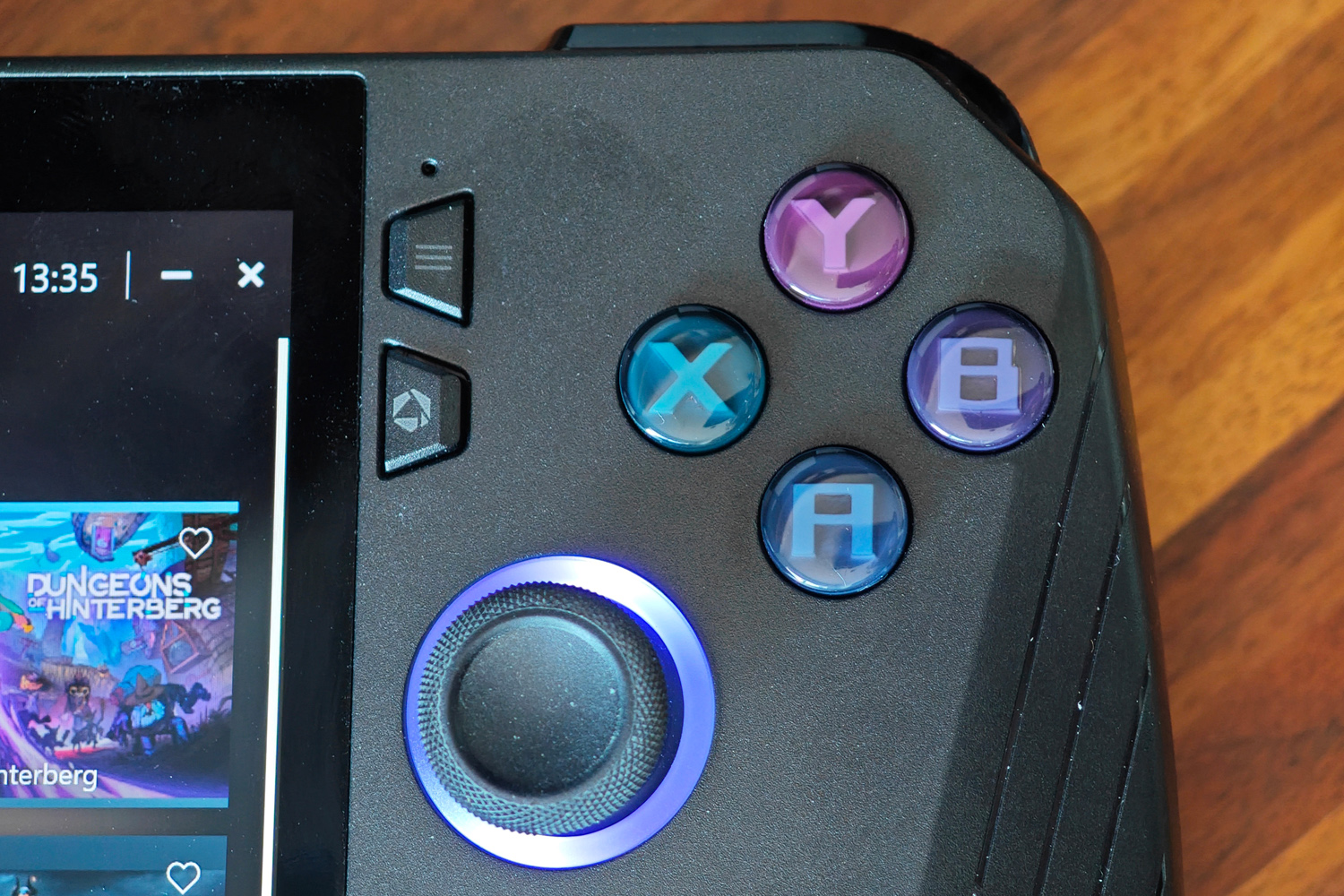
I was a fan of the original Ally’s white finish, even if it did highlight the screen bezels a little too much. Asus has followed the crowd for the refresh, going with an all-black body that’s a lot less in-yer-face. It’s also nowhere near as angular as the old model, with deeper handles (covered in tiny ROG letting, a bit like how the PS5 DualSense controller is covered in PlayStation symbols) that are loads comfier to grip.
The new Ally is a teeny bit thicker than the old one (4.5mm at its thickest point), and almost 70g heavier on account of the larger battery. This is still a svelte handheld, though, being smaller and slimmer than a Steam Deck. I found it easier to hold for an extended play session, and it takes up less room in a backpack – though you’ve got to provide your own carry case here, as Asus doesn’t include one in the box.
Almost every input has been repositioned or changed in one way or another, and all for the better. The face buttons are taller and easier to hit; the triggers are wider, with a more pronounced slant that makes them easier to squeeze; the rear macro buttons are far smaller now, meaning I never hit them accidentally. The D-pad is larger, with an eight-way layout that’s far more precise; it made fighting game inputs far more accurate than they were before, and worked brilliantly with retro and indie titles. Even the fingerprint sensing power button is easier to find, thanks to a more pronounced recess.
The analogue sticks have seen the most attention. They’re wider now, with more concave tops that keep your thumbs firmly in place and uprated potentiometers and stiffer springs that make movement on par with the current crop of console controllers. I like that Asus brought back the RGB lighting effects around each one, too; it gives the all-black colour scheme some welcome added flair.
About the only thing Asus hasn’t done is add a pair of Steam Deck-style touchpads. I can’t deny they make certain genres playable on Valve’s handheld that would otherwise be off-limits using traditional controller inputs, but unless you’re a serious strategy fan I don’t think you’ll miss them.
The Ally X ditches Asus’ proprietary XG Mobile port, which was only useful if you invested in a costly GPU dock, in favour of a second USB-C port with Thunderbolt 4 support – in case you really want to burn some cash on an external graphics card. It also uses a new microSD card reader, which will come as good news to anyone put off the original Ally by a reportedly high failure rate. I had no issues throughout my testing.
Screen & sound: that’s refreshing
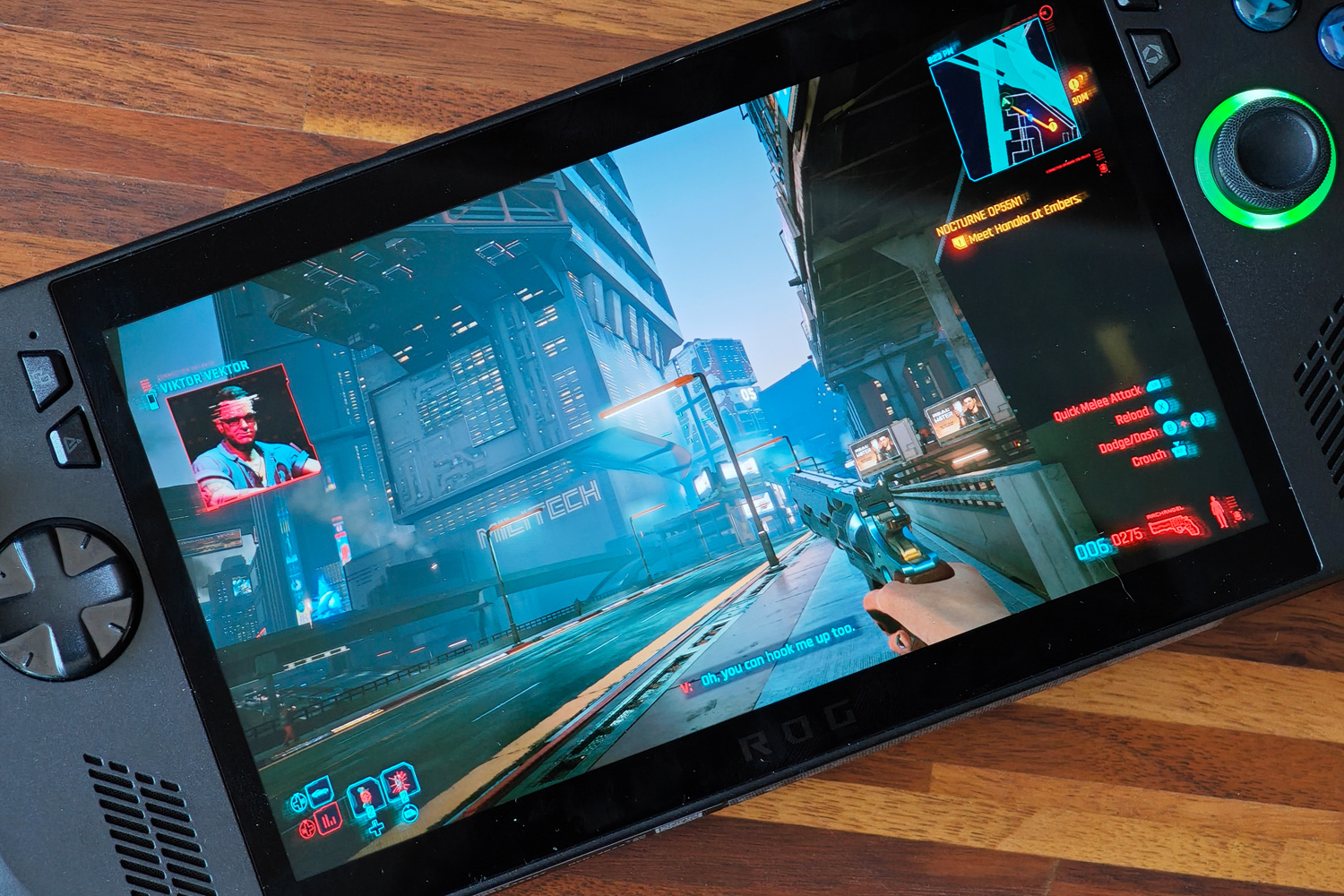
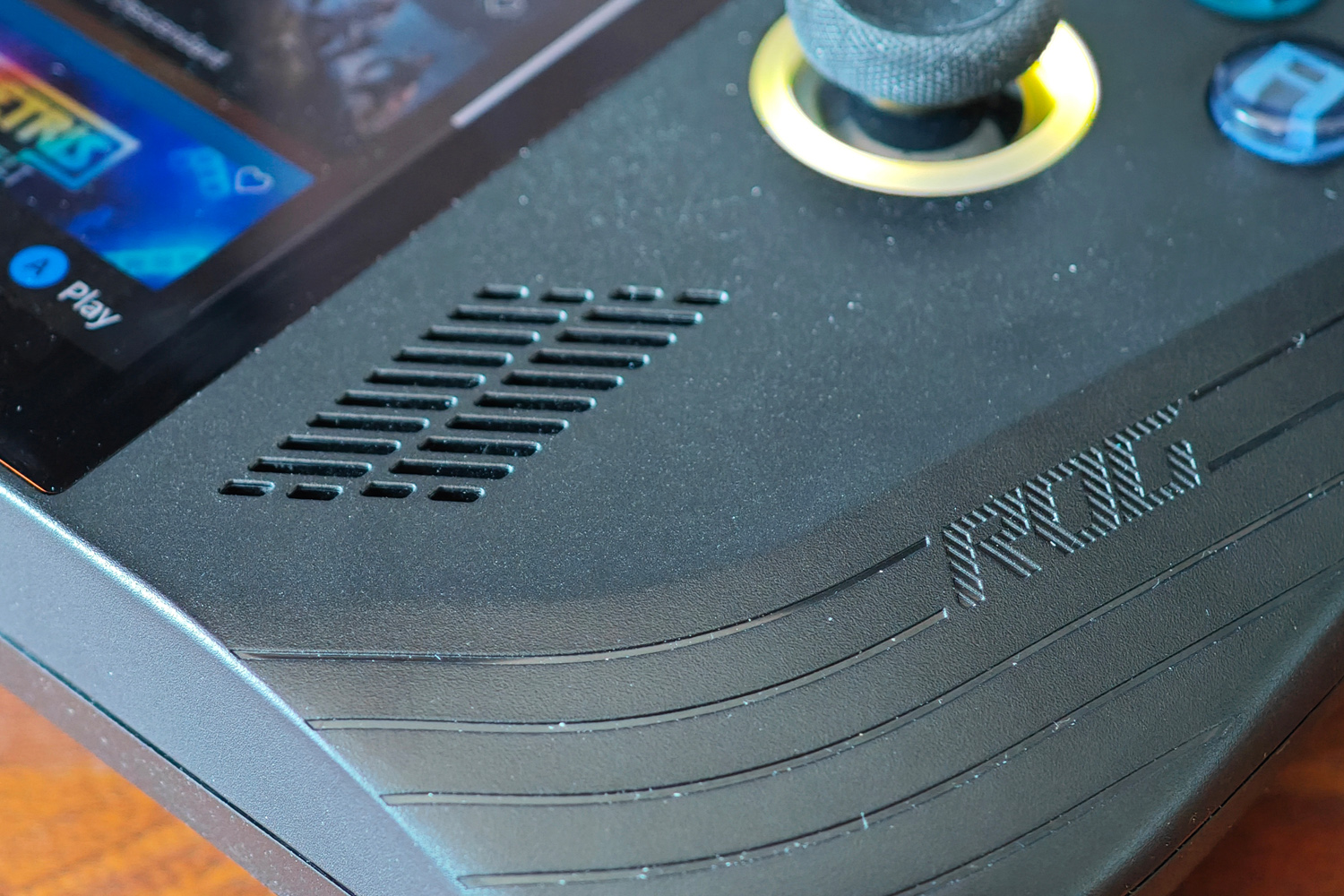
With both Nintendo and Valve showing how much difference an OLED display can make to a handheld, I was a bit disappointed Asus didn’t follow suit for the Ally X. Admittedly the firm has only just recently adopted the tech for its gaming laptops, and such a panel will be an obvious inclusion for the inevitable ROG Ally 2. As it stands, the Ally X brings back the IPS LCD from the original Ally.
It’s a Full HD panel – which one-ups the Deck’s 800p resolution – but is physically smaller, at 7in and a 16:9 aspect ratio to the Deck OLED’s 16:10, 7.4in display.
On one hand, the Deck OLED trounces the Ally X for impeccable contrast, deep, inky black levels, and expressive colours that give even the brownest of 2000s-era cover shooters plenty of visual pop. HDR support then ratchets that up to another level in compatible games. The Ally X still goes without.
On the other, the Ally X looks noticeably sharper, even with graphical tricks like AMD FSR upscaling. Its adaptive 48-120Hz refresh rate also helps games feel noticeably smoother, especially in demanding games where the chipset can’t quite deliver enough oomph to hit a steady 60fps. Input latency is basically level with the Deck OLED. If your game library is mainly newer, graphically intensive games, this alone could swing it in the Asus’ favour.
Valve’s handheld wins on brightness, at least on paper, with a peak 600 nits (1000 nits in HDR) to the Ally’s 500 nits. You aren’t going to be playing either console outside in blazing sunshine, though, so the deficit isn’t huge. This is still far and away a better screen than the original LCD Steam Deck, with accurate colours and excellent viewing angles.
I’m relieved Asus didn’t feel the need to tinker with the Atmos-certified stereo speakers too much; they’re fantastic for a gaming handheld, with plenty of volume and decent stereo separation in games. Some internal finagling has brought a little bit more bass than before, too. Maxing out the volume slider still results in a little harshness, but they’re a league ahead of the Lenovo Legion Go. I only ever needed to reach for headphones when playing in public.
Performance: Marginal gains
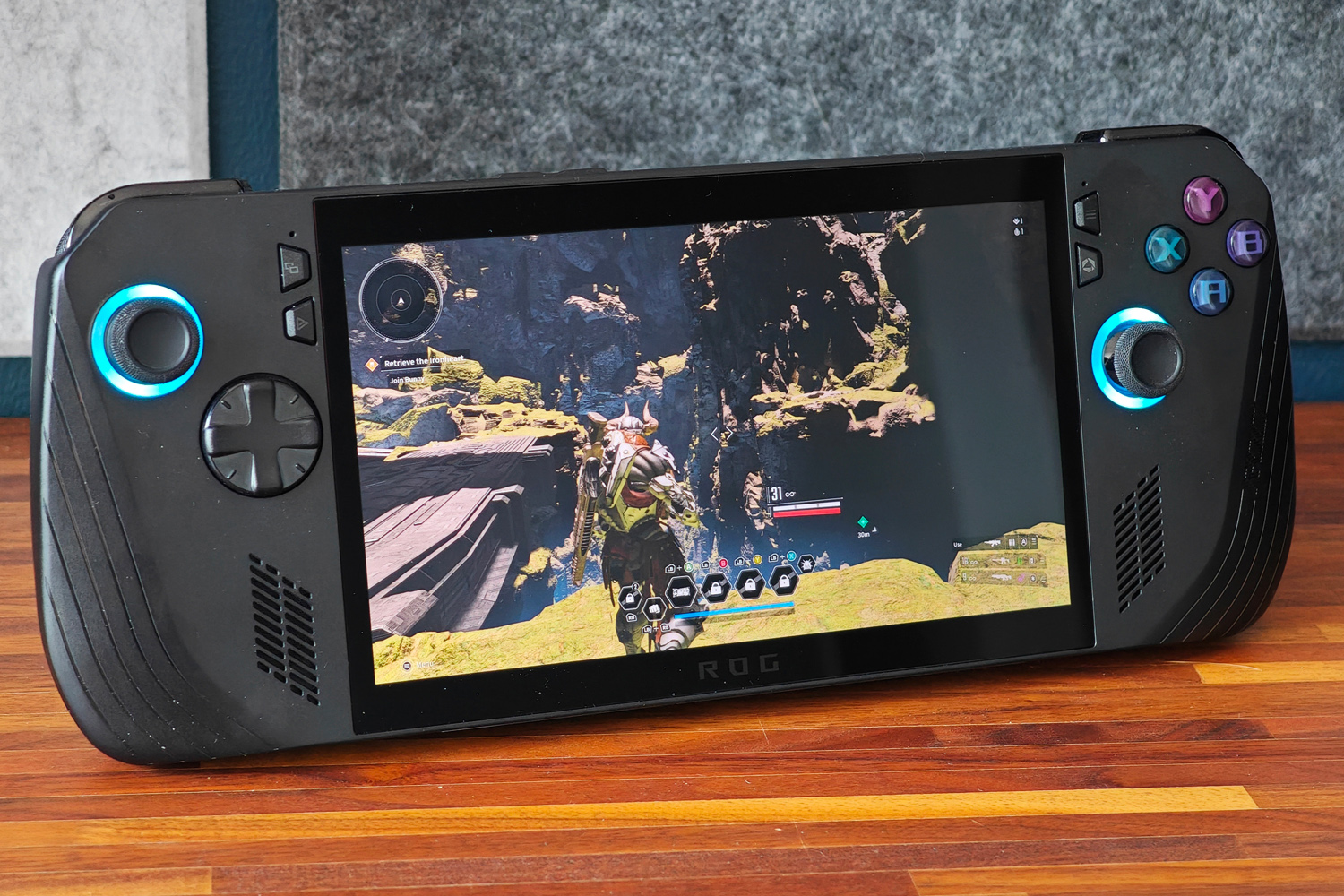
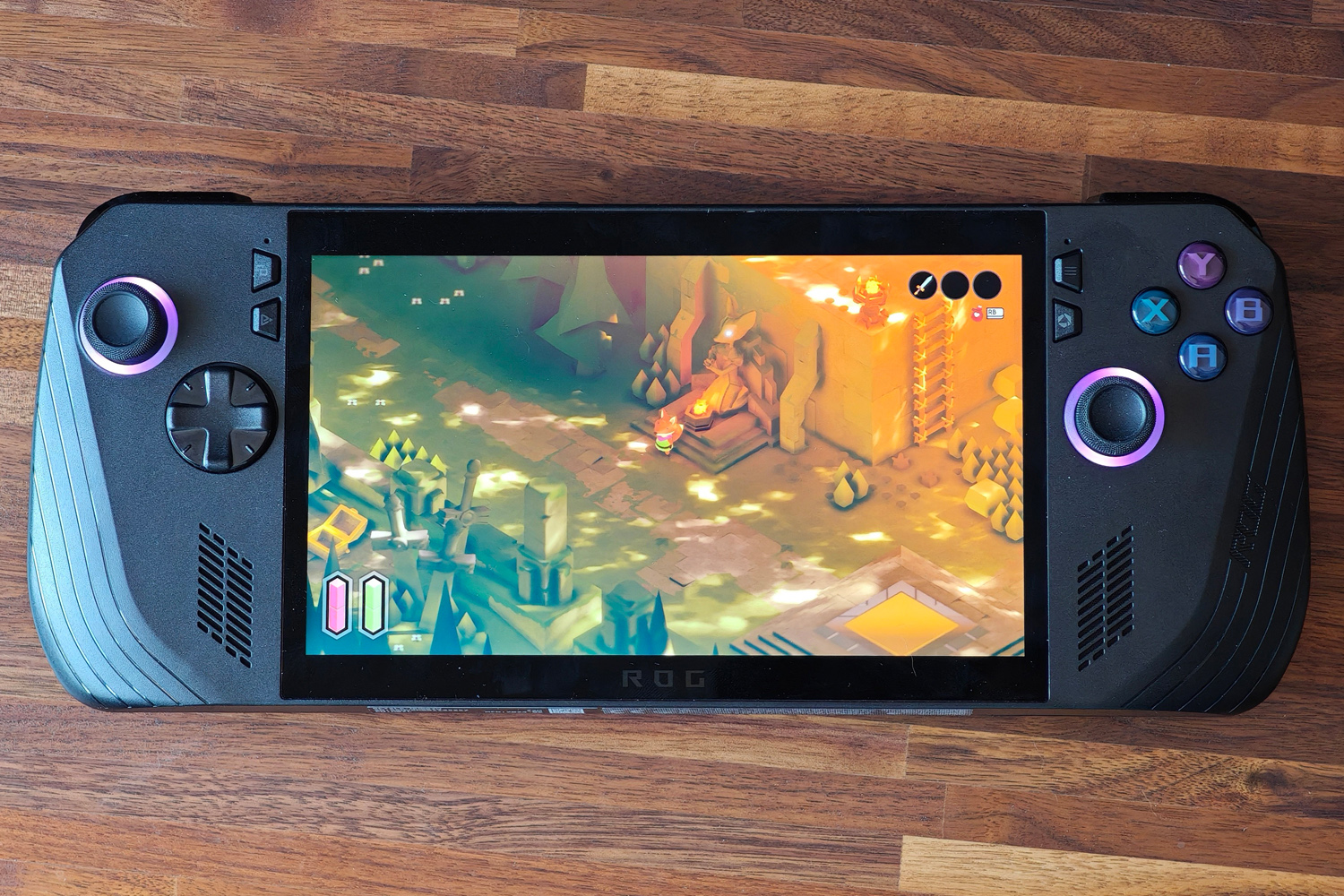
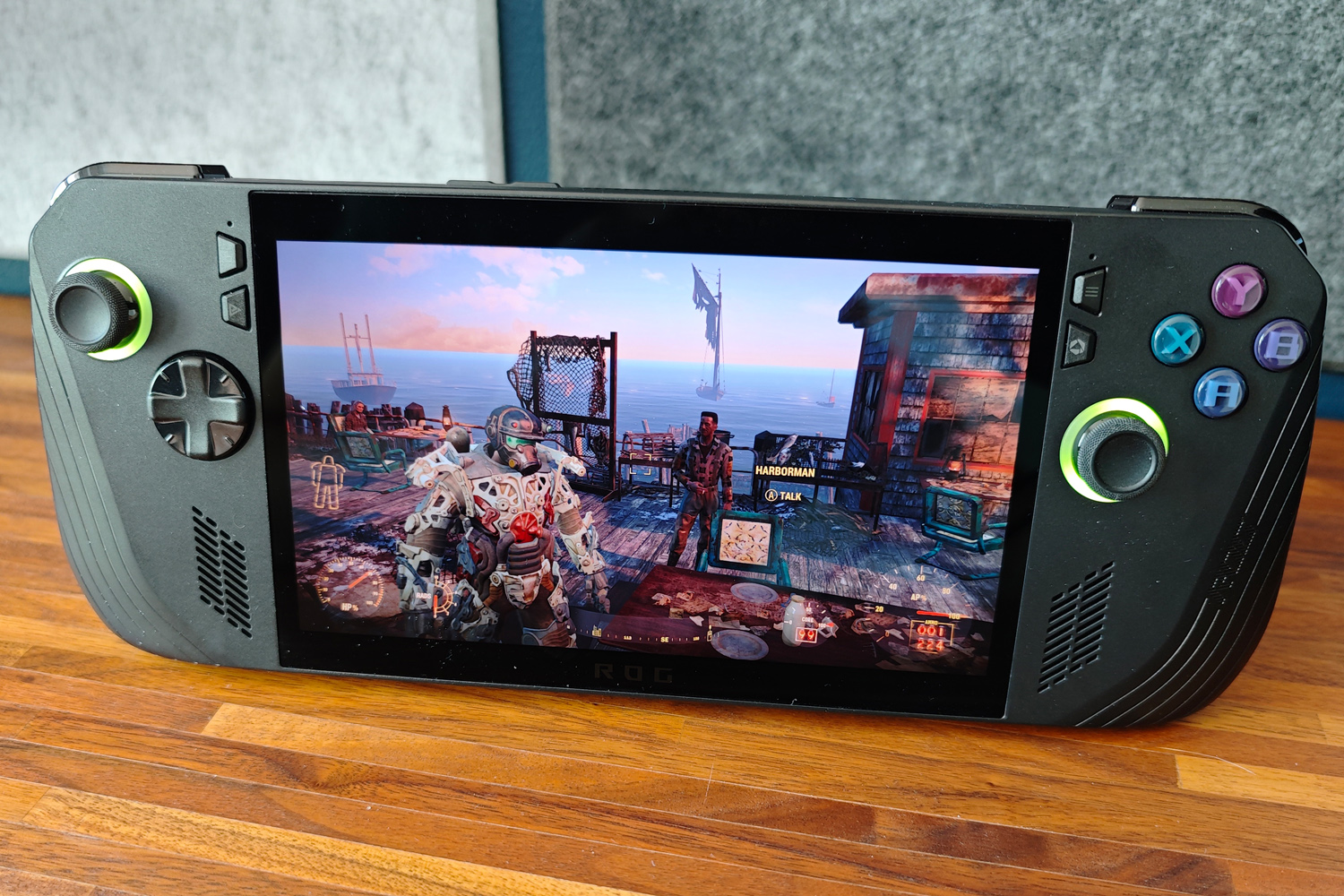
As AMD is still working on its next-gen handheld chipsets, the ROG Ally X sticks with the same Ryzen Z1 Extreme found in the original Ally. Eight Zen 4 cores, a peak 5.1GHz clock speed and RDNA3 graphics give it the performance edge over a Steam Deck OLED, at least on paper.
Asus has increased the memory to a generous 24GB of DDR5 – 8GB more than Valve’s machine, and faster to boot – and doubled storage to 1TB. That’s twice the space of the outgoing model. The Ally X also uses an M2.2280 form factor SSD now, which can be had in much higher capacities than the 2230 type used before. If you’ve got the budget, you could slap a whopping eight terabytes in this thing with very little effort.
Frame rates are what matter most in a device like this, and I’m happy to report the ROG Ally X is a sprightly performer. On battery power games are playable at 1080p to a similar degree as a Steam Deck OLED at 1200×800, before resolution upscaling and other AMD driver tools come into play. There’s about a 10-15% uplift when plugged into mains power.
As long as you’re realistic with detail settings, and don’t mind dipping the resolution to play newer releases, it’s a very capable machine. Cyberpunk 2077 couldn’t manage 30fps, which I consider a playable minimum, at 1080p, but managed a much smoother 51fps at 720p. My other benchmarks can be seen in the graph below.
| Asus ROG Ally X | Steam Deck | |
| Shadow of the Tomb Raider | 33fps (1080p) 53fps (720p) | 41fps (800p) |
| Cyberpunk 2077 | 27fps (1080p) 51fps (720p) | 36fps (800p) |
| Gears Tactics | 60.7fps (1080p) 81.9fps (800p) | 59.7fps (800p) |
Compared to the old Ally, I saw marginally better frame rates in some games, but no difference in others. I chalk that up to the faster memory and more effective cooling. The power advantage is too tiny for owners of the original to justify an upgrade. The Ally X still doesn’t carve out a lead over the Steam Deck, either – an indicator how much difference an optimised operating system makes.
It’s quieter in use, though – or at least it’s quieter than my OG Steam Deck. Even in Turbo mode, which gives the chipset 25W of power to play with on battery power or 30W when plugged in, the fans never became annoying. Asus had to shrink them to make room for the larger battery, but extra blades on each one and a new third exhaust vent mean the Ally X pushes out significantly more air than the old model. Even the touchscreen felt cooler to the touch after an hour of The Last Descendent.
Battery life: longer lasting
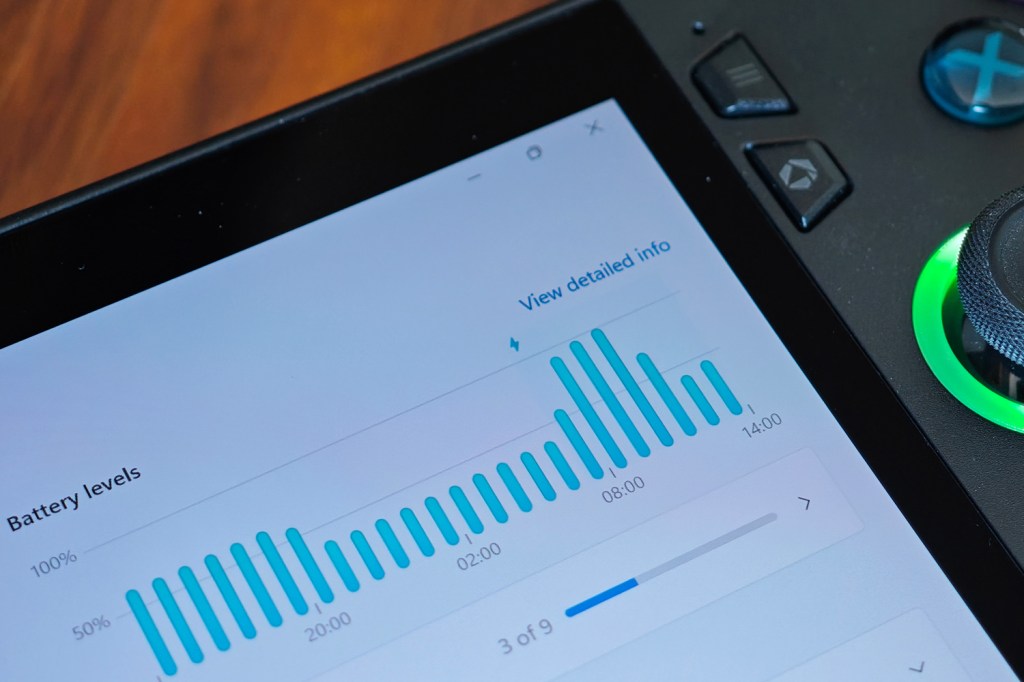
Hiking the battery capacity from 40Whr to 80Whr sounds like it would make a huge difference to the Ally’s lifespan away from the mains. That’s true in some cases: Hades 2 and Portal 2 lasted over six hours each before draining the handheld dry, which is several hours more than an LCD Steam Deck can manage.
Newer, more demanding titles like Horizon: Zero Dawn are good for closer to two or three hours. That’s similar to a Steam Deck OLED – but remember the Asus is running at a higher display resolution. It’s only when I experimented with the lower TDP Silent setting that the Ally revealed any real weakness. Like most Windows-powered handhelds, it simply can’t last as long when asked to dial its power reserves back to their lowest. Valve’s machine is fantastic at sipping power in basic 2D titles like Vampire Survivors.
Asus maintains its charging speed lead, though. With a beefy enough power brick you can top up the Ally X at 100W – over twice that of the Deck OLED. Not that you get one in the box, mind. I saw a complete recharge in about an hour.
Software experience: still wrestling with Windows

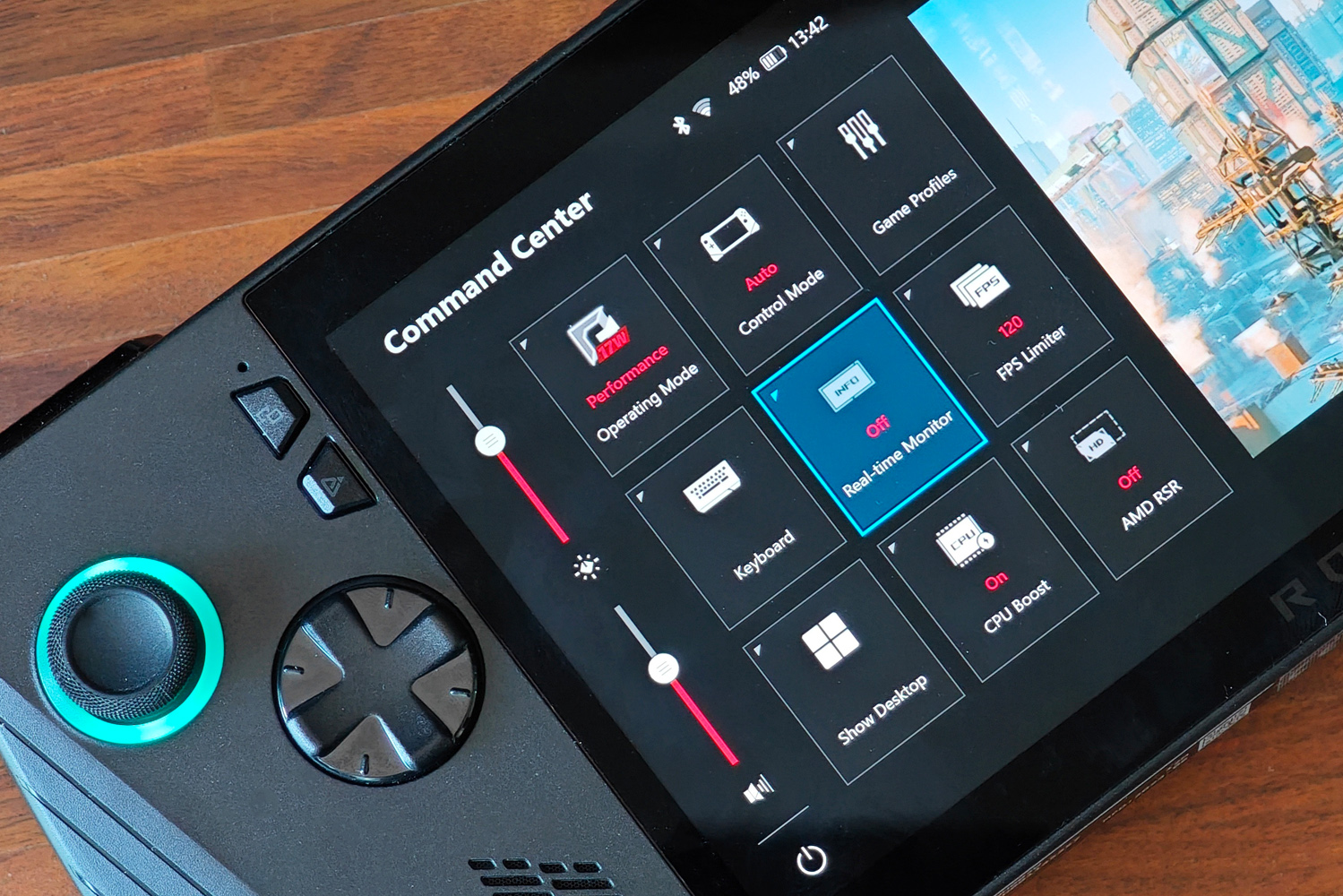
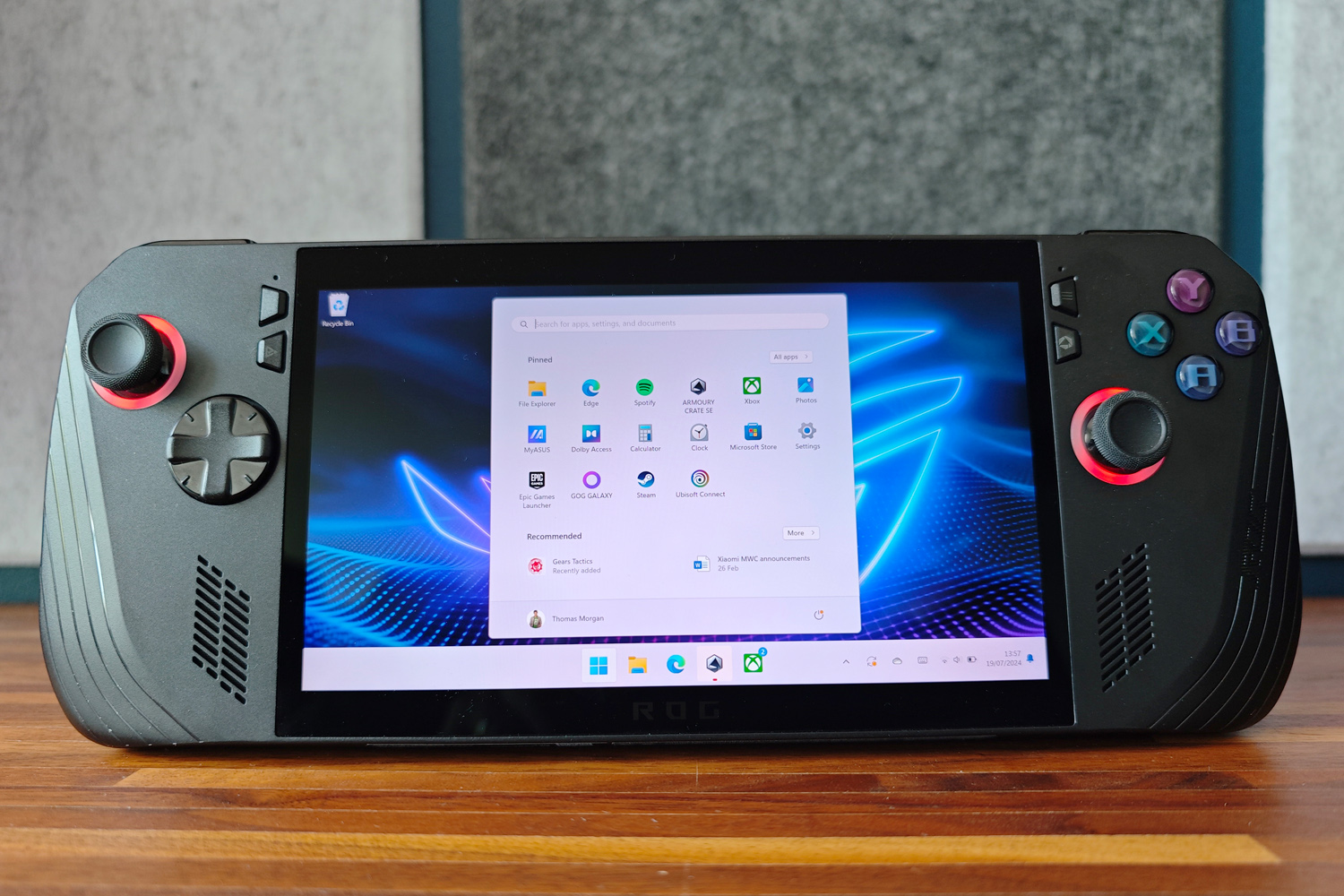
Windows-based handhelds don’t have to worry about games with kernel-level anti-cheat not playing ball, or Linux compatibility issues like Steam Deck owners do – but Microsoft’s OS still doesn’t feel at home on a small screen. Installers that hide behind other windows, intrusive security pop-ups and UI elements that are too small to tap accurately on the touchscreen are as frustrating as ever.
Asus’ Armory Crate SE software does its best to hide you from that, booting automatically when you turn the Ally X on and pulling in your installed games from all the major storefronts and launchers. It’s the next best thing to Steam’s big picture mode for keeping your library organised, and some major updates have made it much more usable than when I first tried it on the original Ally.
As before, you can pick performance profiles, remap buttons on the fly and adjust the RGB lighting (though I still want an even dimmer setting than the app allows). Controller calibration is more in-depth now, and you can share your button mappings for specific games with other Armory Crate users.
Asus ROG Ally X verdict
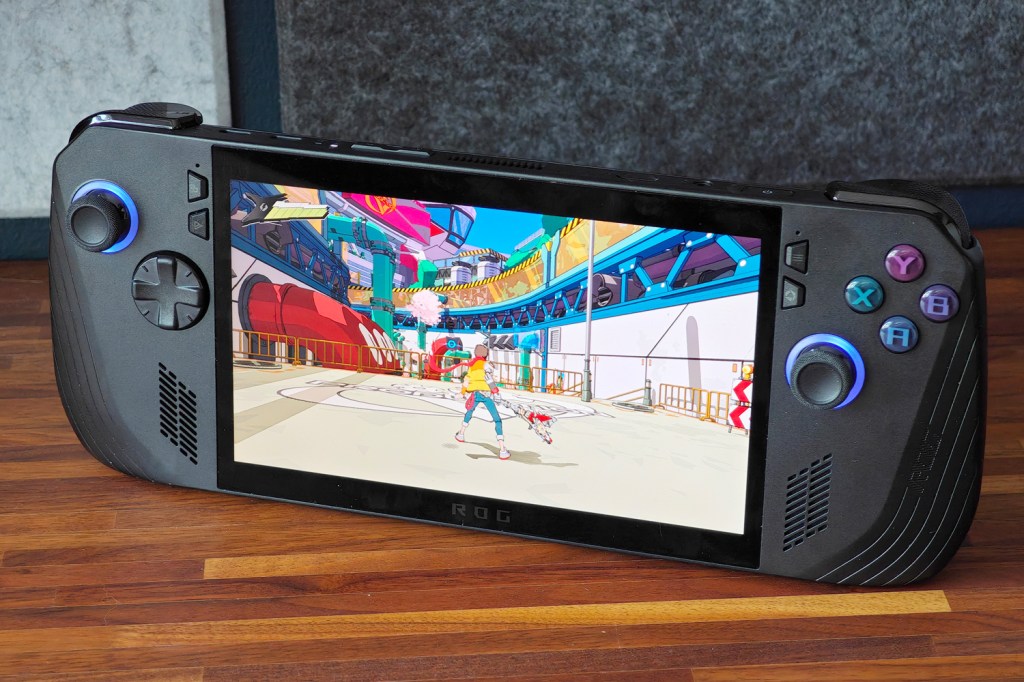
If you’re new to the whole PC gaming handheld thing, and want to play more than just your Steam library without messing about with Linux, the Asus ROG Ally X is now the obvious choice. It lasts longer than the original, has an easily upgradeable SSD, and more RAM than any Steam Deck. The refined ergonomics also put both the MSI Claw and Lenovo Legion Go in the shade.
It’s not perfect: Windows 11 still doesn’t feel entirely happy on a small screen, and the display’s colours and contrast aren’t a match for the Steam Deck OLED – even if the Ally’s higher resolution and refresh rate levels the playing field a bit. The price is a lot spicier than Valve’s handheld, too – it’s now almost in gaming laptop territory.
Original ROG Ally shouldn’t be in a rush to upgrade, then, and the Steam Deck OLED remains my top pick – but the gap is narrower than ever.
Stuff Says…
A mid-life update that addresses pretty much every major complaint about the original. The Asus ROG Ally X still isn’t the perfect gaming handheld, but it’s the best that runs Windows.
Pros
A powerful gaming machine with quiet, effective cooling
Considerably better battery life than the original Ally
Ergonomics a welcome improvement
Cons
Bad stuff 1
Bad stuff 2
Asus ROG Ally X technical specifications
| Screen | 7in, 1920×1080 120Hz LCD |
| CPU | AMD Ryzen Z1 Extreme |
| Memory | 24GB RAM |
| Graphics | AMD Radeon 780M (integrated) |
| Storage | 1TB on board, microSD expansion |
| Operating system | Windows 11 |
| Battery | 80Whr |
| Connectivity | USB-C/Thunderbolt 4 x1, USB-C 3.2 Gen 2 x1, 3.5mm audio port |
| Dimensions | 280x111x24.7~36.9mm 678g |



